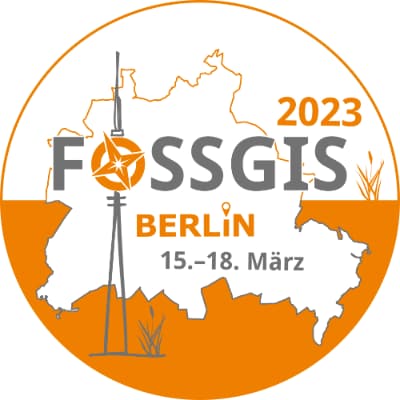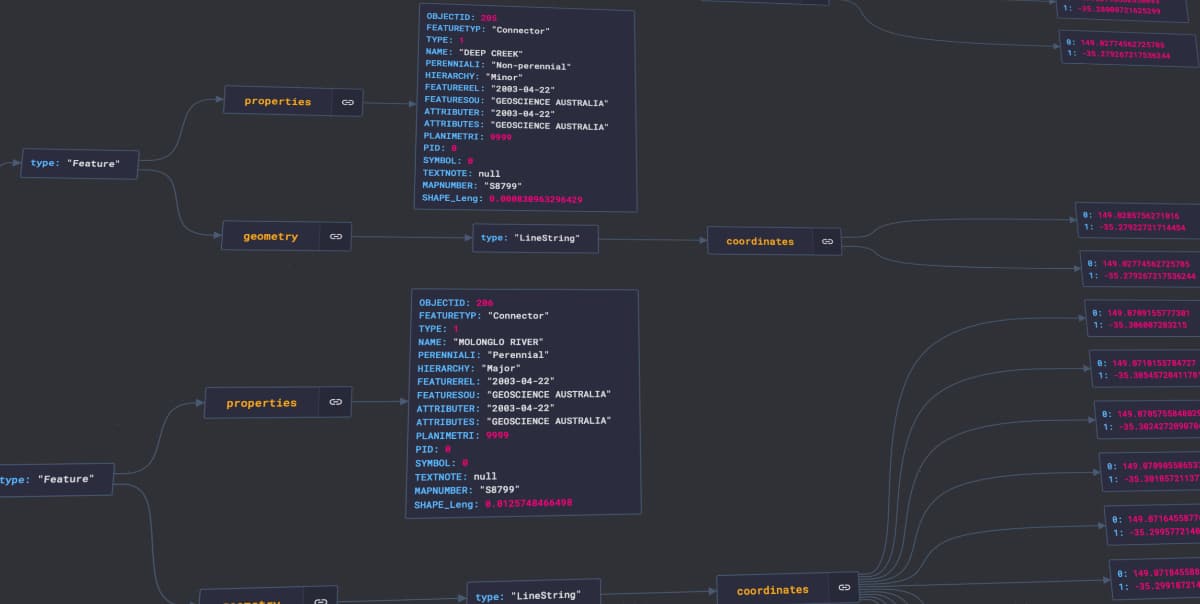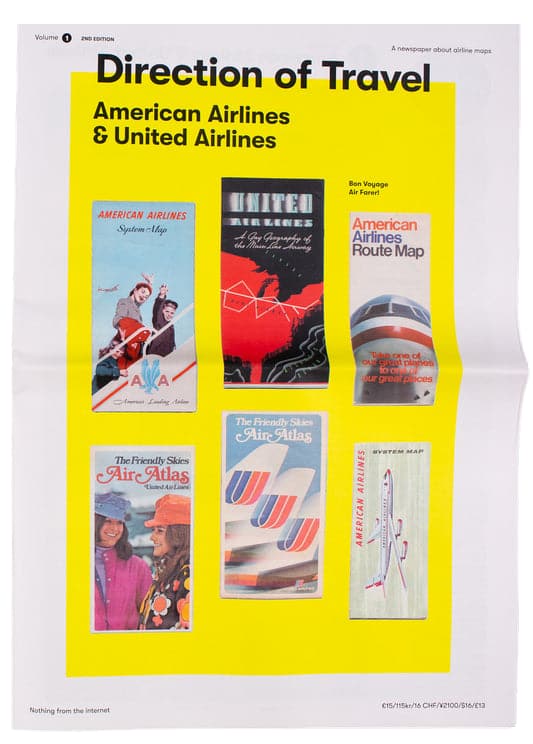Recordings of State of the Map 2022 Are Now on Youtube
If you couldn’t attend in Florence, or if you want to catch up on the talks you missed: The recordings for this year’s State of the Map are now on Youtube in one big playlist.
If you couldn’t attend in Florence, or if you want to catch up on the talks you missed: The recordings for this year’s State of the Map are now on Youtube in one big playlist.
Polylines are an efficient way to represent line geometries. You provide a geometry, and out comes a scrambled string of letters and numbers that encodes the geometry in just a few characters. Polylines are helpful when you want to efficiently transfer geometry information between services. The Mapbox Static Images API, for example, can overlay complex geometries from Polylines, which wouldn’t be possible otherwise because the request-URL length is limited.
Placemark has released a new Polyline JavaScript library, allowing developers to encode or decode coordinate arrays and GeoJSON objects. It does pretty much the same as existing Polyline utilities from Mapbox or Google. Still, Placemark’s solution is a modernised implementation that includes TypeScript types and a neat autogenerated documentation site; it supports ESM and UMD imports and standardises longitude-latitude order.
FOSSGIS is the major German-speaking community event for geospatial open-source software and OpenStreetMap, a smaller, local, German-speaking FOSS4G. It is held annually and usually attracts several hundred people to share and discuss the latest trends and advancements around software, open data and case studies.

FOSS4G 2023 will be held from 15 to 18 March 2023 in Berlin. The call for participation is now open until 7 November 2022. As usual, there will be a mix of general and academic talks, lightning talks, workshops and project demos.
JSON documents can be challenging to read, especially GeoJSON, with complex geometries and many feature properties. JSONCrack visualises JSON documents in a graph, making them easier to parse visually and to understand their structure and content.

JSONCrack works best with small(ish) files. I initially tested with a 17.7MB GeoJSON file that contains about 16,000 records. While it parses and formats the file without issues, it can’t produce the visualisation. Only at about 500 records did JSONCrack render the visual representation.
A print publication containing airline maps? Where do I sign up? Directions of Travel is a magazine about just that published twice a year in newspaper format. It is sold online and in selected shops in London, Zurich, and New York.

Can’t wait to get to London for Christmas to get my hands on one of these.
Instead of using an established navigation service and handing over details about where you’re going, how about running the infrastructure required for routing and navigation on a server you control so you know where your location data is going.
That’s the idea behind Headway, a batteries-included software stack including a front-end application, basemap, geocoder and routing engine. With just a few commands, You can spin up a Headway instance on your local machine within minutes. You can build Headway using data from over 200 preconfigured metropolitan areas, a custom OpenStreetMap extract, or the whole planet.
Headway bundles many well-known open-source software, such as MapLibre for its map client, Pelias for geocoding, Valhalla for routing, Planetiler to prepare vector tiles from OpenStreetMap, and many more.
For most people, even the nerdy folks out there, running and maintaining a personal Headway instance for your navigation needs is still likely too much effort and cost. But for anyone trying to build a business that needs navigation, Headway is a fantastic starting point to make a product.
To test Headway without lifting a finger, you can try maps.earth instance.
Leaflet was one of these libraries that I thought were done. While there have been constant updates and new releases throughout the years, there were rarely any massive, ground-breaking additions. Leaflet is built perfectly against its small, well-defined scope. Huge changes just weren’t necessary.
Even great software is never done because it needs to keep up with the latest technological developments. And so development of a new major release for Leaflet was announced as part of the 1.9 release notes. The work for the next major version catches up with recent developments in the browser market, the JavaScript landscape and compiler tooling:
- Dropping support for Internet Explorer.
This has been a long time coming, but now that Internet Explorer is officially end-of-life, it’s time to say goodbye. Going forward, Leaflet will move to an evergreen strategy that targets browsers like Firefox, Chrome, Edge and Safari.- Embracing modern JavaScript.
To maintain backwards compatibility, Leaflet is written entirely in ES5, a version of JavaScript supported by legacy browsers. So we have not been able to make use of many great JavaScript features (e.g. standardized classes, instead having to rely on our own implementation). By adopting a more modern version of the ECMAScript standard, we can start working towards aligning Leaflet with what is expected from a modern JavaScript library.- Standardized modules.
When we released Leaflet v1, the landscape in the JavaScript world was very different and full of competing module standards such as CommonJS, AMD and UMD. Today, ECMAScript modules have become the clear way forward to unite the JavaScript ecosystem under one banner. Moving forward, Leaflet will only be distributed in a single standardized module system, greatly reducing complexity of our distributed code.- Removing the Leaflet global.
As a developer using Leaflet, the capital letter L is probably intimately familiar to you. This is the Leaflet global where all of Leaflet’s functionality lives. To allow compiler tooling to better eliminate dead-code through a process called tree-shaking, we are removing this global variable. To preserve backwards compatibility with older plugins, we will provide a shim that can be imported manually that will restore this functionality.
There’s no release date, not even an estimate, and maintenance of the 1.x branch will continue in the meantime.
Nick Herr, usually writing about Apple-related topics, writes about What3Words:
But I stumbled across this amazing catalogue of how What3Words is insufficient for emergency use. This comes by way of a Twitter thread where the queue to see Queen Elizabeth’s coffin has apparently stretched as far away as North Carolina and California.
Apparently, four of the seven locations announced until yesterday afternoon were incorrect because of minor typos.
What3Words isn’t fit for purpose, not for any purpose, really. The more people realise this, the better, especially the ones outside the usual geo crowd.
Felt have hired Erica Fischer and are reviving development of Tippecanoe, which hasn’t seen many updates in the last couple of years. The last release was on over two years ago.
Tippecanoe is an essential tool for geospatial-data providers. It creates vector tile sets from various geospatial formats and optimises the data for visualisation purposes, so the resulting maps allow viewers to understand the density of a data set without clustering or excluding data.
Speaking in the Felt blog, Erica hints at what might be next in store for Tippecanoe:
The special challenge of Tippecanoe at Felt is that it is being applied to user uploads with no opportunity for manual configuration, so it has to be able to make efficient, faithful, good-looking tiles without being given any hints about what kind of data it is tiling. I already know that it doesn’t currently do very well at low zoom levels with topographic contours, or with gridded data represented as individual polygons, or with continuous urban parcel polygons, or with branching systems of rivers, and I’m sure the uploads will also soon reveal other usage patterns that need to be detected and given some special treatment.
Felt will maintain Tippecanoe in a fork; Brandon Liu, of Protomaps fame, has also been working on another fork — and they are planning to unify development going forward.
Excellent open-source citizenship all around.
MapServer 8.0 was announced last night; adding, amongst other improvements, two features that stand out:
MapServer, together with PostGIS, was one of the first open-source GIS libraries I used as a Geography student some 20 years ago. If my memory isn’t too clouded, MapServer was among the first open-source products to implement OGC standards. Fantastic news that it’s still under active development and keeping up with the latest developments in the industry.